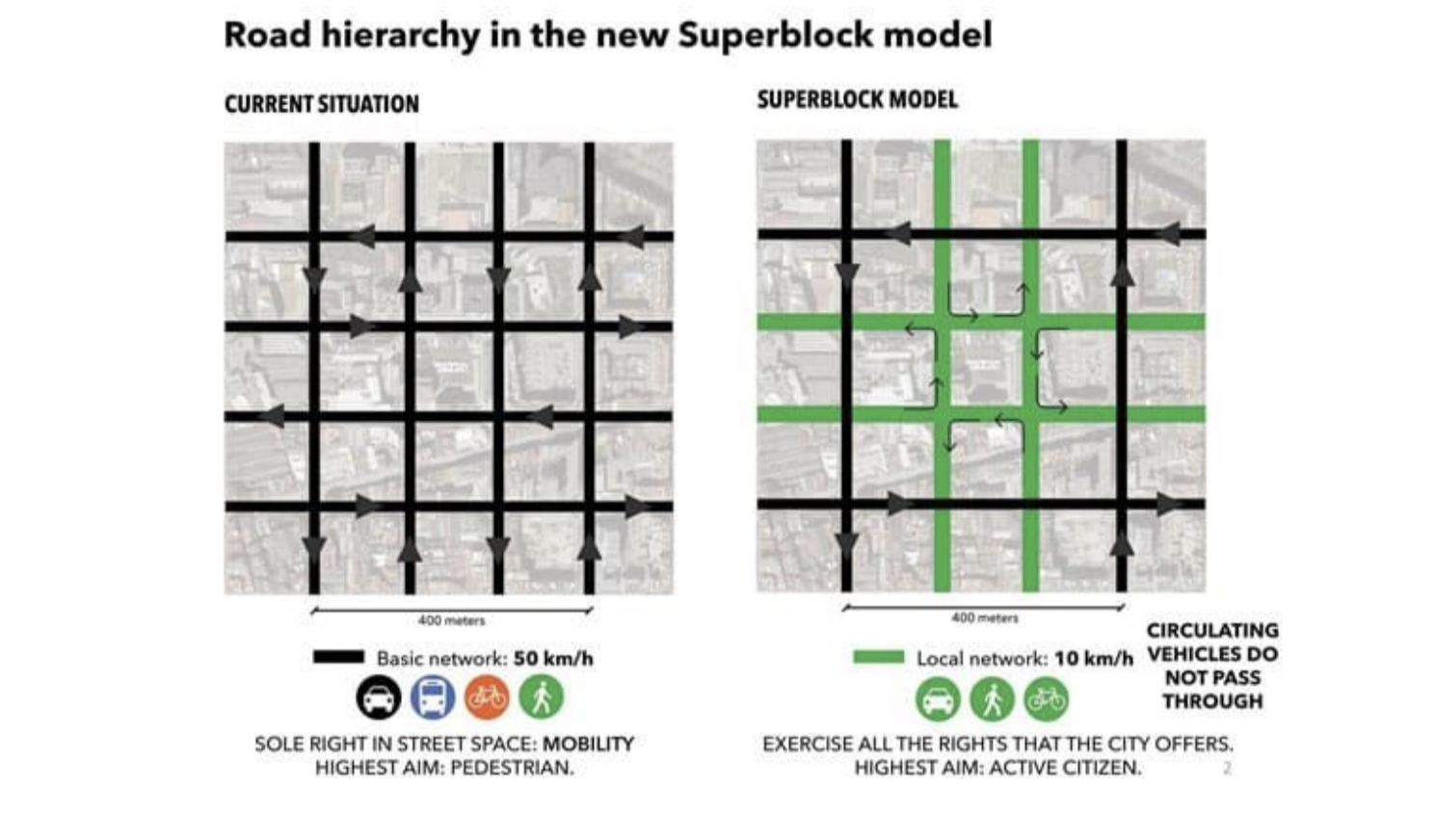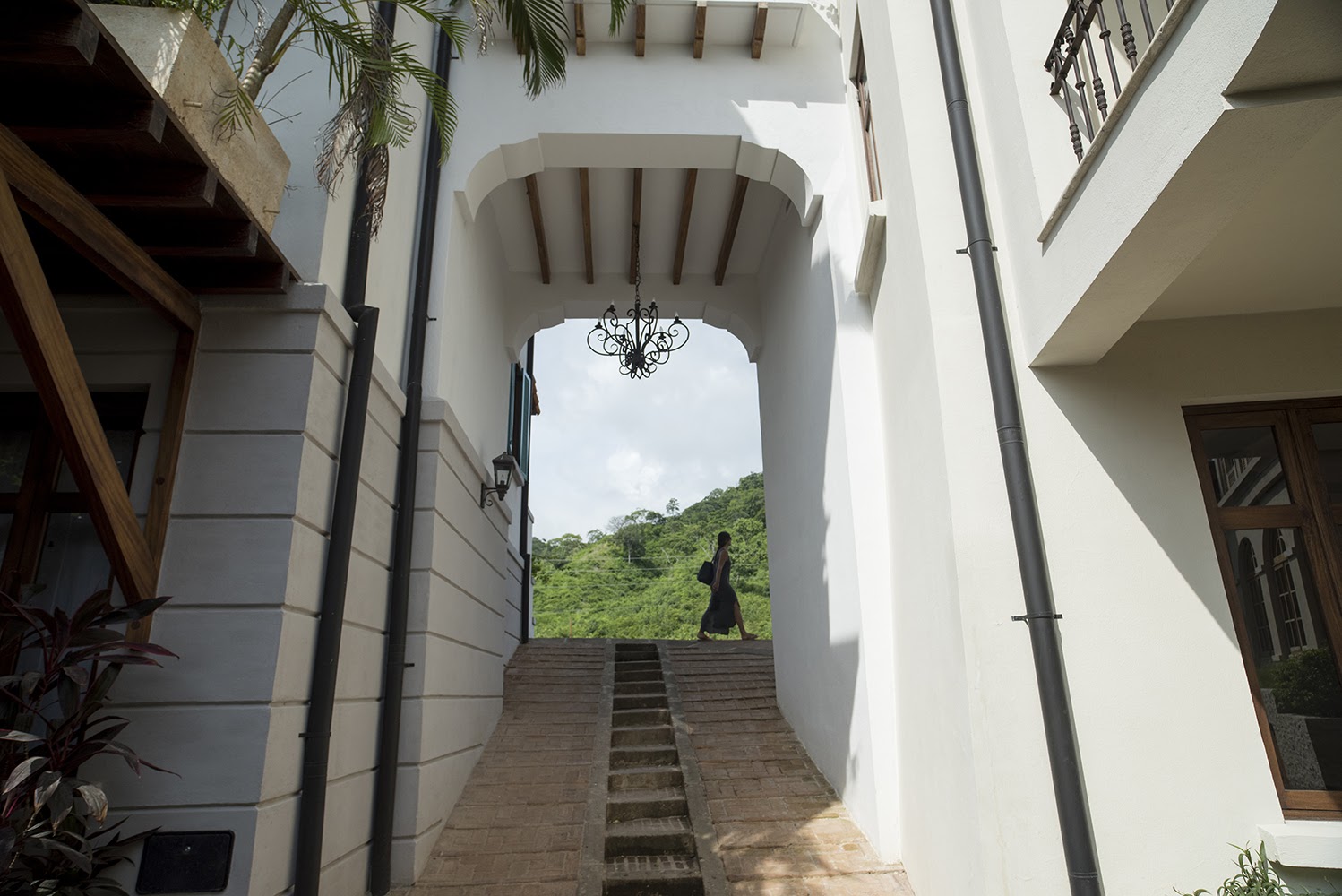Superblocks in Barcelona and the Car-Free Movement
January 5, 2020
As the car-free movement proceeds around the world, people and town planners continue to innovate new ways to make towns and cities more sustainable and human centered by limiting the involvement of automobiles in life.
In old cities that are already built to accommodate cars, there are a number of physically different ways that adaptations are being made to make car-free living more viable. For example, the city of Copenhagen has invested heavily in car-free living by emphasizing the bicycle, with significant investment in cycling infrastructure in an area that now features more than 600 miles of bike lanes.
Another is the creation of “superblocks”, a process that changes the flow of powered traffic through a city, which requires very little construction or physical change, but can have a significant impact on the way of life of those in the city.
Superblocks in Barcelona and the Basque Country
First implemented in Vitoria-Gasteiz in the Basque Country, the idea behind the superblock was simple. In order to limit the pervasiveness of cars on the city’s streets, and return these spaces back to pedestrians, a number of traditional blocks (usually 400 meters per side) would be grouped into new so called superblocks, which are not permeable to through traffic. With the exception of specially permitted vehicles like emergency services, cars are redirected to circulate the outside of these superblocks, which allows the interior space to be reclaimed for walking, biking, and public spaces.

The basic layout of a superblock | PC: Agéncia d'Ecologia Urbana de Barcelona
The result is a minimal restriction of vehicular traffic that leads to a significant improvement in pedestrian experience, safety, and livability. In parts of downtown Vitoria-Gasteiz, one of the key adopters of superblocks, the number of cars on the road by 27%, leading to a 42% reduction in the city’s carbon dioxide emissions. A full 50% of residents walk as their primary mode of transportation, and 15% bike, all without a need to develop infrastructure or demolish a single building.
“It’s a revolution,” says Salvadoro Rueda, a Barcelona resident and key advocate of the superblock in his interview with Magtzer. “A cheap revolution, where you don’t have to demolish a single building.”
The success of the superblock in Barcelona and the Basque Country is a model for immediate change in many urban areas. Even in heavily car-integrated towns like Buenos Aires or Quito, the effects of these superblocks have been tangible, resulting in drastic reduction of vehicular traffic in “microcenters”.
Once superblocks have been integrated into the community based on infrastructure, the next phase is to enhance these areas. Extending bike lanes, expanding sidewalks, adding new green spaces, building benches, and beautifying these now-pedestrian areas all further contribute to the overall experience of the superblock.
The Car Free Movement
The evolution of urbanism is the evolution of the very way of life in towns and cities. Superblocks are just one example of the car free movement, which represents a turn towards a way of living that is better for people and better for nature.

Another example of a place fully embracing this movement is Las Catalinas, which was planned from the ground-up with a radical design that kept cars at arm’s reach, to create a way of life that is integrated with nature, fosters more connections between people, and is healthier and more active for those who spend time there. In doing so, the town presents a significant difference for its people, as well as a model for how car-free towns can grow elsewhere in the world.
